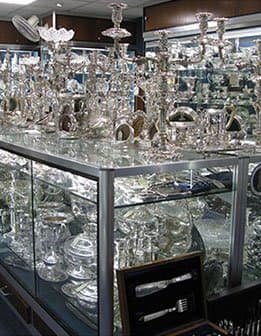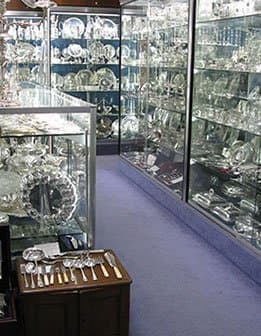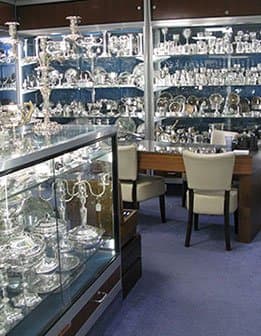Silver has long been valued as a precious metal – used for jewellery, silverware, coins and other products. The standard for silver items is 92.5 % silver and no more than 7.5 % base metal, usually copper.
You have a prized silver antique collection, but do you know if it is solid silver of simply silver plated?
Silver plating was developed as an inexpensive way for people who could not afford sterling (or solid silver) to enjoy the beauty of the metal without the hefty price tag. In fact, some manufacturers got so good at creating silver plated items that it is sometimes difficult to tell the difference between the two. Unfortunately, when it comes to the value of your antiques, whether you have solid or plated silver makes a big difference, so it is important to be able to differentiate between the two.
Look for a stamp
The first thing you can do is to look for hallmarks or stamps on the silver. Most countries require pure silver to be stamped, showing details and silver content.
If you notice a stamp on your antique silver, use a magnifying glass to inspect it closely. International sellers commonly use the numeric values, as they will indicate the percentage of fine silver that is found in the piece. For example, a piece stamped with 925 will indicate that the item is 92.5% silver.
The new full hallmark also has 925, where as prior to 1999 you only had to have the lion passant.
A hallmark means that the article has been independently tested. It also:
- Guarantees that it conforms to all legal standards of purity (fineness).
- Guarantees provenance by telling us where the piece was hallmarked, what the article is made from and who sent the article for hallmarking.
- The standard hallmark formation is horizontal with minimal spacing between the marks.
Other formations of these hallmarks, often called “bespoke” or “display marks” are available. Hallmarking is a fascinating subject and will be covered in future blogs. If your antique silver does not have a stamp, it may have simply been produced in a country that does not stamp its solid silver products, but you should follow up with an additional test.
Testing and hallmarking precious metals for over 700 years
The Goldsmiths’ Company Assay Office is where hallmarking began and have been testing and hallmarking precious metals for over 700 years.
They have been responsible for guaranteeing the purity of items made of precious metals since 1300, when the hallmarking statute was passed. They became the official “home of hallmarking” in 1478, establishing the country’s first Assay Office at Goldsmiths’ Hall London, which still operates today.
Get Your Piece Evaluated
There is an amount of misleading information on the internet about how to test for silver so, if you still are not sure about whether your antique is solid silver or silver plated, there are a variety of great professionals out there that can give you some insight. An antique dealer, auctioneer, appraiser or estate sale company should be able to examine your item and tell you about its silver composition.
Our Makers
An A to Z list of silversmiths featured on our website
About Us
If you see something in Archive that you would have liked please contact us as we might be able to source
Our Store
Our store is situated in vaults 3 and 5 on the right-hand side of the main corridor at The London Silver Vaults




